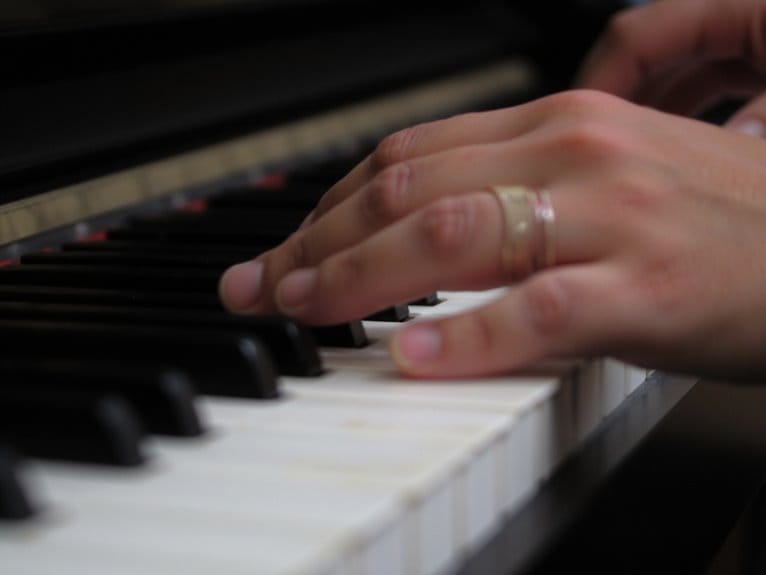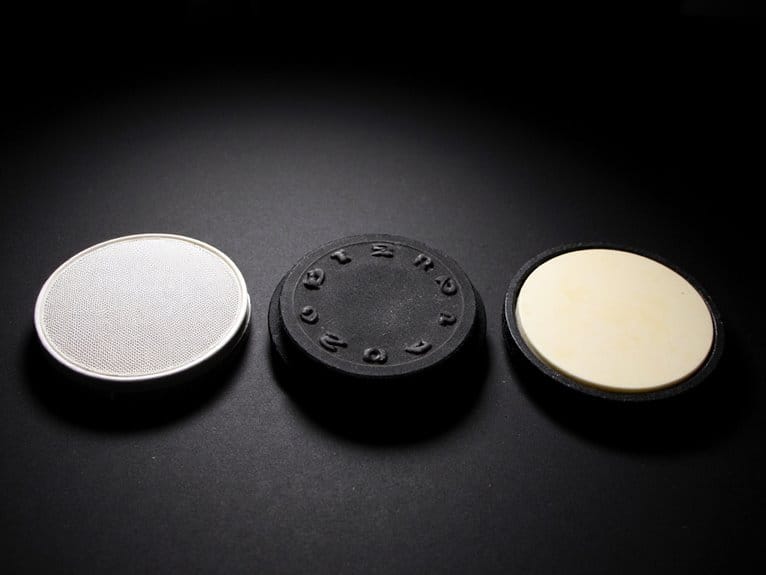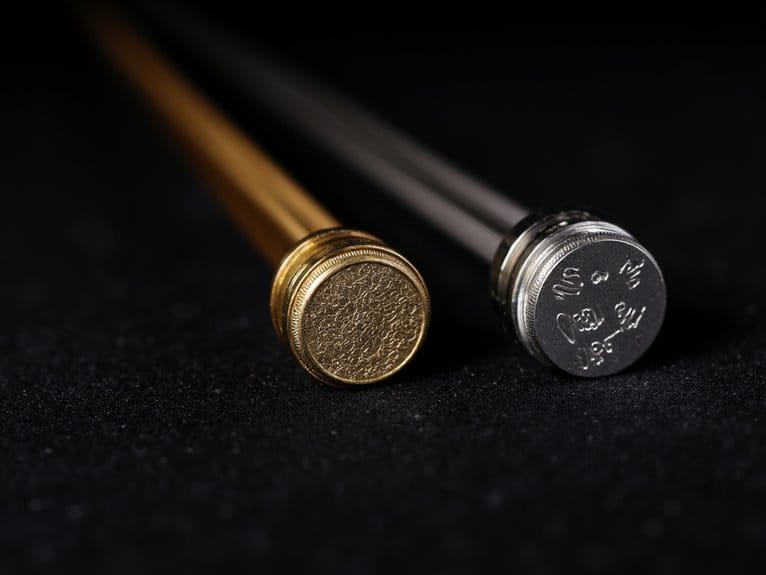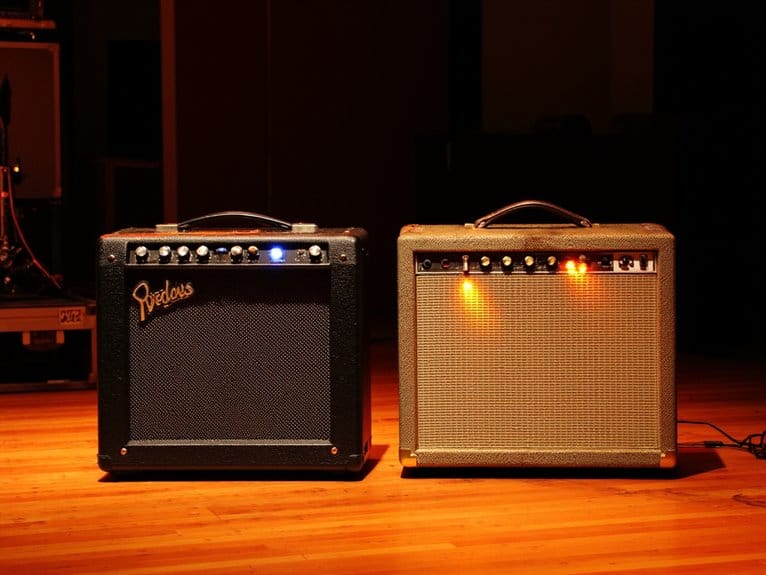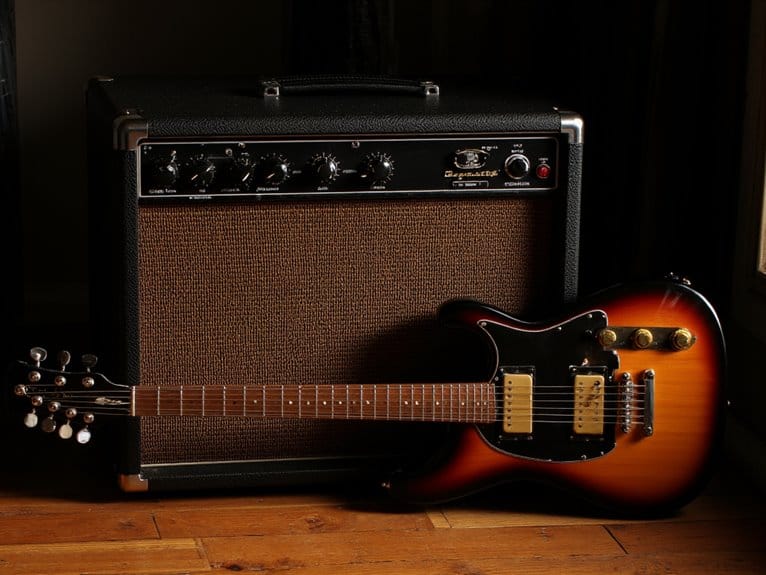Understanding Digital Piano Polyphony and Why It Matters
Digital piano polyphony determines how many notes you can play simultaneously before experiencing frustrating dropouts, with acoustic pianos having unlimited capacity while digital instruments face processing constraints. When you’re using sustain pedals or layering sounds, polyphony demands multiply quickly, potentially causing older notes to cut off during complex passages. Beginners typically need 32-64 notes, intermediate players benefit from 64-128, while advanced musicians require 128+ for seamless performance that won’t compromise your musical expression.
We are supported by our audience. When you purchase through links on our site, we may earn an affiliate commission, at no extra cost for you. Learn more.
Notable Insights
- Digital piano polyphony refers to the maximum number of individual notes that can be produced simultaneously.
- Insufficient polyphony causes note dropouts during complex pieces, especially when using sustain pedals or layered sounds.
- Beginners need 32-64 notes while advanced players require 128+ notes for professional recording and complex repertoire.
- Sustain pedal usage significantly increases polyphony demands as sustained notes overlap with newly pressed keys.
- Manufacturers use priority algorithms to manage notes when limits are exceeded, either dropping oldest or ignoring newest notes.
What Digital Piano Polyphony Actually Means
When most people hear “polyphony,” they might think of complex classical music with multiple melodies weaving together, but in the digital piano world, I’m talking about something far more fundamental yet perhaps more significant for your playing experience.
Digital piano polyphony refers to the maximum number of individual notes your instrument can produce simultaneously, which becomes essential during any digital piano comparison since it directly impacts sound quality.
Unlike acoustic pianos where all strings can vibrate freely, your digital piano has processing limitations that cap this number. When you press keys while using the sustain pedal or layer sounds, each note counts toward your polyphony limit, and exceeding it causes older notes to drop out unexpectedly.
Modern digital pianos use multiple samples for each key press to create richer, more realistic sounds, which means a single note might actually consume several voices from your polyphony count.
This technology enhances the playing experience for both beginners and experienced pianists by affecting the depth and complexity of sound in your music.
How Polyphony Limits Affect Your Playing Experience
Although polyphony specifications look like mere numbers on a spec sheet, I’ve learned through years of testing digital pianos that these limits create surprisingly tangible effects on your actual playing experience, particularly when you’re exploring more complex repertoire or using expressive techniques.
When you’re working through dense classical pieces or experimenting with layered sounds, insufficient polyphony creates noticeable note dropouts that disrupt musical flow.
Insufficient polyphony causes frustrating note dropouts during complex classical pieces, interrupting the natural musical flow you’re trying to achieve.
I’ve observed that sustain pedal use dramatically increases polyphony demands, causing premature note cancellations during passages that should sound smooth and connected.
These performance challenges become especially apparent when you’re developing advanced playing techniques like finger pedaling or recording multitrack arrangements, where accumulated notes can quickly exceed your instrument’s processing capacity, forcing unwanted compromises in your musical expression. Stereo audio samples consume twice the polyphony of mono sounds, which is why many pianists experience unexpected note cutting even with seemingly adequate specifications.
The Technical Side: How Digital Pianos Manage Multiple Notes
Behind these frustrating polyphony limitations lies a fascinating world of digital signal processing that I’ve found surprisingly complex during my technical explorations of piano architecture.
When you press keys, the piano’s internal processor must juggle computational resources across multiple simultaneous notes, and this is where voice allocation becomes critical.
I’ve discovered that manufacturers implement specific note priority algorithms to manage this challenge—some use “last note priority,” which drops the earliest sounding notes for newer ones, while others employ “first note priority,” ignoring new presses when capacity fills.
These voice allocation systems work behind the scenes, dynamically assigning processor power to maintain sound continuity, though they occasionally create those annoying note dropouts we discussed earlier.
Just as digital pianos require sophisticated processing to manage polyphonic complexity, recording these performances demands careful consideration of preamp gain capabilities to capture the full dynamic range of your instrument. Additionally, when using a digital piano, it’s essential to select an audio interface that complements its output characteristics. The right preamp can enhance the instrument’s nuances, ensuring that every note is recorded with clarity and richness. Proper gain staging will not only preserve the integrity of the performance but also allow for more flexible mixing in post-production.
For musicians looking to capture these performances digitally, understanding how audio interfaces handle multiple input channels becomes equally important in managing the technical complexity of recording polyphonic instruments.
Why Sustain Pedals and Sound Layering Demand Higher Polyphony
While I’ve spent countless hours testing digital pianos, I consistently notice that sustain pedal usage creates one of the most demanding scenarios for polyphony consumption, since every note you press continues resonating even after you lift your fingers from the keys.
Those sustained notes overlap with newly played ones, quickly multiplying your polyphony requirements beyond what you’d expect from simply counting fingers on keys.
Sustained notes stack up with new ones, demanding far more polyphony than your ten fingers suggest.
Sound layering compounds this effect dramatically, as each keypress triggers multiple instrument voices simultaneously, effectively doubling or tripling polyphony consumption per note.
When you combine advanced sustain techniques with layering effects like reverb-heavy strings over piano samples, you’re creating a perfect storm that can overwhelm instruments with insufficient polyphony, resulting in those frustrating note dropouts that interrupt your musical flow.
Choosing the Right Polyphony Count for Your Needs
Understanding these polyphony demands naturally leads to the question of how many voices you actually need, and I’ve found that matching polyphony count to your skill level and playing style prevents both overspending on unnecessary features and underwhelming performance when you need it most.
| Skill Level | Polyphony Range | Recommended Use |
|---|---|---|
| Beginner | 32-64 notes | Simple practice, basic pieces |
| Intermediate | 64-128 notes | Complex music, moderate sustain |
| Advanced | 128+ notes | Professional recording, layering |
| Recording | 120+ notes | Multi-track sessions |
| Budget-conscious | 64 notes | Future-proof starter option |
Entry level choices around 64 notes work perfectly for most beginners, while advanced options with 128 or more voices handle complex pieces without note dropouts, ensuring your investment grows with your skills.
Frequently Asked Questions
Can I Upgrade My Digital Piano’s Polyphony After Purchase?
You can’t upgrade your digital piano’s polyphony after purchase due to digital instrument limitations. Polyphony upgrades aren’t possible because it’s determined by fixed hardware components like processing chips that can’t be altered or enhanced post-manufacturing.
On a final note
You’ve now got the knowledge to make an informed decision about polyphony, and honestly, it’s one of those specs that’ll serve you well long-term. Whether you’re eyeing that 64-note model for casual playing or investing in 256-note polyphony for serious performance work, you’ll avoid those frustrating note drop-outs that can derail your playing experience, especially when you’re layering sounds or holding down that sustain pedal.

